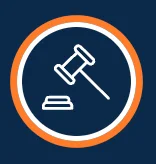It’s almost always best to replace a seat belt after a car accident. Like airbags, seat belts are designed for single use. A seat belt that has been in an accident may not function properly again, even if it appears to latch in place.
Replacement is necessary in all cases except extremely minor collisions. After a crash, a seat belt should be carefully inspected by a qualified professional. If locking mechanisms have deployed, there are other signs of wear, or it functions abnormally, you should replace it.
Jordan Law Center’s Greenville car accident lawyer explains seat belt replacement after an accident and what you need to know. If you have been in an accident, call 864-808-1810 to talk to a lawyer about your case.
Do You Have To Replace Seat Belts After an Accident?
Replacing seat belts damaged in an accident may be necessary to return the vehicle to roadworthy condition. South Carolina Code § 56-5-6520 requires every vehicle driver and occupant to wear a seat belt that complies with federal standards. If the accident is extremely minor, you can have the seat belts inspected to ensure they are functioning properly. In all other circumstances, you should replace them.
Why Seat Belts Would Need To Be Replaced After an Accident
Modern seat belts are designed for single use. The seat belt pre-tensioner and locking mechanism are designed to function once.
This is not a design flaw. The locking mechanism quickly deploys to secure the person when an accident occurs. Once deployed, the arrest mechanism cannot be reliably reset. In addition, there may be other wear and tear from an accident that makes a seat belt unreliable.
But I can still put my seatbelt on. Do I still need seat belt replacement?
Even if you can still put the seat belt on, you should replace it after a car accident. Much of what makes a seat belt work is internal.
Even if the latch and buckle are still functional and the seatbelt webbing stretches across the body, the internal mechanisms may be flawed. These flaws can be devastating if you are in another collision.
How Seat Belts Work
When an accident occurs, a vehicle suddenly decelerates. The seat belt senses this sudden change and locks up, minimizing the individual’s movement and holding them in place.
When you buckle up, you attach the belt with a latch and buckle. The belt connects to a retractor mechanism, where the excess belt can spool.
A pre-tensioner activates when there is sudden deceleration during an accident. This holds the person in place and distributes forces more safely than would likely occur without the seat belt. It all happens quickly.
Signs that a seat belt needs replacing
- Visible damage—cut, frayed, or pulled webbing; fading
- Debris accumulation—debris accumulation within seat belt components
- Won’t buckle—when the seat belt won’t latch into place
- Anchors not secure—when the points of a seat belt aren’t securely fastened to the vehicle (e.g. buckle, retractor, or spring anchor not firmly attached)
- Won’t retract—if the seat belt doesn’t retract properly when you pull on it
Consequences of Not Replacing a Damaged Seat Belt
Seat belt failure
If you are in an accident and wearing a damaged seat belt, it may not function properly. The seat belt may unlatch, resulting in the person being thrown from the vehicle. The pre-tensioner may fail, making the webbing of the seatbelt ineffective. Anchor points may tear away from the vehicle, leaving the person effectively unrestrained.
Tension failure
A damaged seat belt may malfunction by not allowing the appropriate amount of give. Seat belts are designed to hold a person in place but give just the right amount. With just enough give, weight can be properly distributed, with the person put in place to absorb airbag impact in the best way. Without enough give, too much force could be distributed across the person’s chest, which could result in severe injury.
Disputing the cause of failure in an accident
Failing to replace a seat belt after a car accident can put you in a defensive position when it comes to another car accident claim. It can make it easier for the other side to point to something else that caused or contributed to your injuries.
For example, a defective seat belt design or manufacturer assembly error may be to blame for seat belt failure. That may be the truth, but the defense may say that they’re not liable because you failed to replace the seat belt after a previous car accident. They may say that you can’t prove the seat belt failure was related to the design or manufacturing flaw. Not replacing your seat belt after an accident can make things complicated if another accident occurs.
You may fail an inspection.
Your physical safety is the most important reason to make sure that seat belts are functioning properly. However, a non-working seat belt may also cause you to fail a vehicle inspection.
But I’ve heard that airbags can be reset. Can’t seat belts?
An airbag being reset probably refers to the airbag control module and not the airbag itself. The airbag control module uses sensors to monitor driving, detect a crash, and deploy the airbag.
After a crash, it can be reset to again be ready to detect a crash. This is not the same thing as reusing an airbag. Both airbags and seat belts should be replaced after a collision.
How a Greenville Car Accident Lawyer Can Help
A Greenville car accident lawyer can help you determine if seat belt function was an issue in a car accident. They can assist you with complex technical and scientific evidence, such as investigating if a seat belt failed in a collision. They can fight back if the defense raises issues to distract from your case and your compensation.
Contact a Lawyer
Have you or a loved one been in a car accident? Contact us at 864-808-1810 to talk to a lawyer at Jordan Law Center.







“There is not enough GREAT THINGS I could say about Jordan Law Center.”